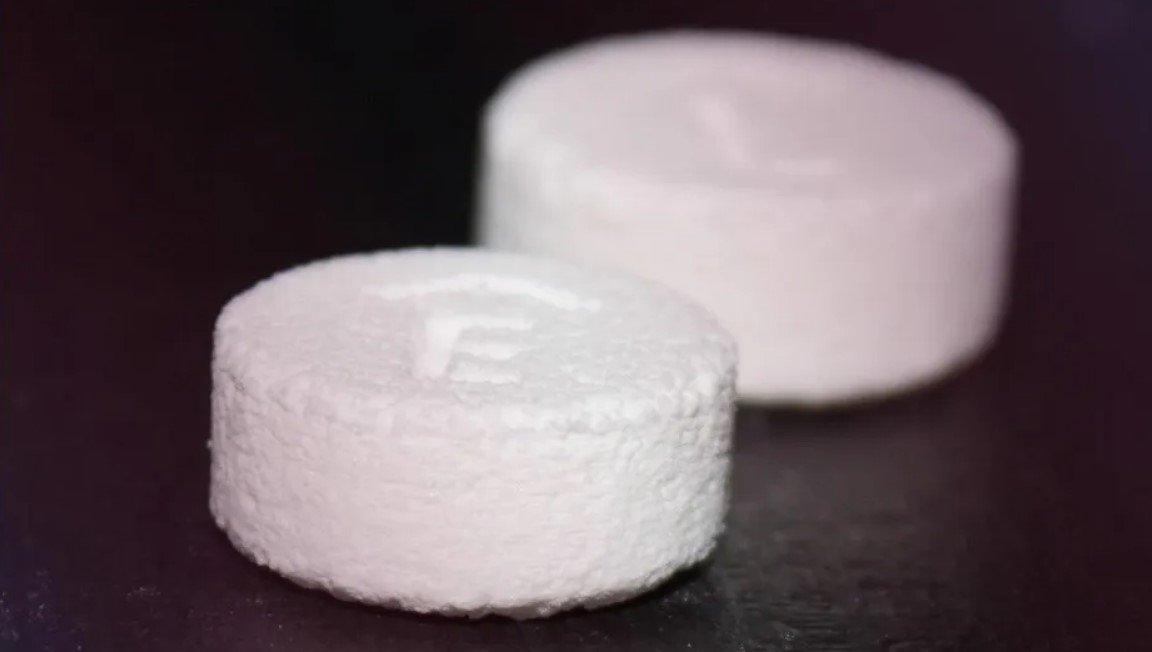hidden
Over 10 years experience of Traceability Solutions

By pharmatrax
Category: News
 No Comments
No Comments
Purdue, Pharma Company Partner for 3D Printed Drugs
WEST LAFAYETTE and CINCINNATI – Many business sectors are unleashing the power of 3D printing technology, and experts believe 3D printed (3DP) medications could revolutionize how pharmaceuticals are made—”a process, that frankly, hasn’t changed much since the 1950s or 60s,” says Purdue University College of Pharmacy Dean Dr. Eric Barker. The first and only 3DP drug is on the market, but 3DP pharmaceuticals face grand challenges that must be overcome before their full potential can be realized. A newly formed partnership between Purdue and pharmaceutical technology company Aprecia Pharmaceuticals LLC means those conquests could be made Indiana.
Oral medications are typically mass manufactured with a tablet press; ingredients are mixed in a large vessel and compressed into a tablet. “There’s not a lot of flexibility in that process as a result,” says Barker. At the opposite end of the spectrum is 3DP pharmaceuticals, which offer flexibility as a major benefit.
“Because 3DP [pharmaceuticals] are more on-demand and more customized, it allows much more flexibility,” says Barker. “There’s a real opportunity with precision medicine—being able to scale and dial in dose size for a specific patient. Many drug companies see tremendous opportunity and much greater flexibility in creating dosage forms that meet specific patient needs.”
Cincinnati-based Aprecia specializes in 3DP pharmaceutical products. In 2015, the small private company commercialized the first and only 3DP pharmaceutical on the market, called SPRITAM: a tablet that disintegrates within seconds with just a sip of water to treat certain types of seizures for patients with specific forms of epilepsy who may struggle to swallow medication.
The tablet uses Aprecia’s ZipDose 3DP technology, a process that involves laying down a bed of pharmaceutical blended powder, followed by a binding fluid to build—layer by layer—a porous, water-soluble tablet that dissolves within seconds. Aprecia Chief Executive Officer Chris Gilmore says ZipDose could deliver new capabilities: combination drug products, so patients can take fewer tablets; modified release drugs, rather than the standard immediate release; and taste-masking, in which bitter-tasting drugs are coated to make them more tolerable.
“Typically, when you think of 3D printing, you think of a one-off, super precise individual product that’s being manufactured,” says Aprecia Marketing Services Vice President Jennifer Zieverink. “What we’ve been able to do is use that same level of precision manufacturing for a commercial-scale pharmaceutical product.”
No other 3DP drugs have been commercialized since SPRITAM in 2015. Gilmore says ownership issues caused lengthy delays; an investor positioned the company to go public, but Aprecia was then recapitalized and remains privately held. Buoyed by the new partnership, both Purdue and Aprecia believe it’s time to step on the gas and use their complementary expertise to power through barriers that have slowed the development of 3DP pharmaceuticals.
“[Purdue] has an engineering team that is the best in the world, they have an industrial pharmacy group that’s doing very difficult formulations…and of course, the pharmacy school,” says Gilmore. “There are a lot of schools that would be interesting to partner with, but Purdue is really unique because they have the best of all three disciplines—all in one.”
Barker believes the College of Pharmacy’s intellectual horsepower, combined with Aprecia’s strength in 3DP, creates a partnership in which “the sum of the parts is greater than the individual pieces.”
While Aprecia has created commercial-scale manufacturing equipment for 3DP, Gilmore notes “the FDA doesn’t have great tolerance for the first [tablet] looking different from the last one produced on the line.” He believes Purdue’s engineering expertise could help build the next generation equipment train to “make sure we’re making a repeatable tablet every time we produce it—that each one looks like the next one.”
Such efficiencies would, ultimately, drive down costs for patients—a critical prerequisite for market success. Such innovations could be realized through the partnership; Purdue will be a matchmaker of sorts, helping connect the university’s contacts with Aprecia to surmount 3DP challenges.
“We’re at the left side of the bottom of the curve; we’re trying to figure out how fast the ramp-up is going to be during the growth phase,” says Gilmore. “There’s a lot of opportunities…and there will be, potentially, competitors for us in the future. But we definitely are well ahead of what we perceive as competition, and we’re excited about our relationship with Purdue. Continue to advance and stay ahead: that’s the strategy here.”



